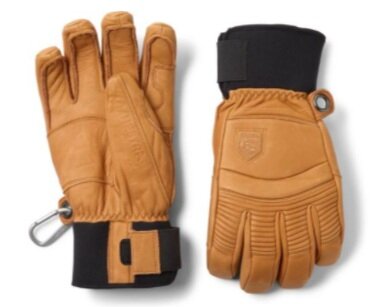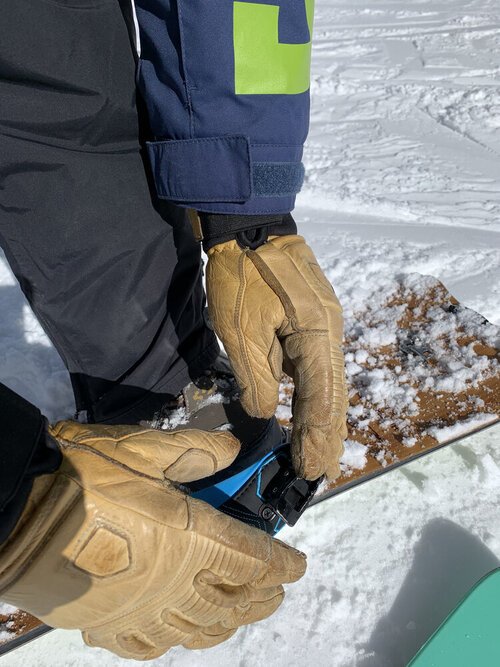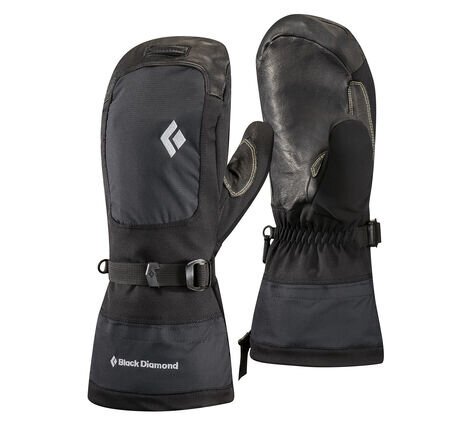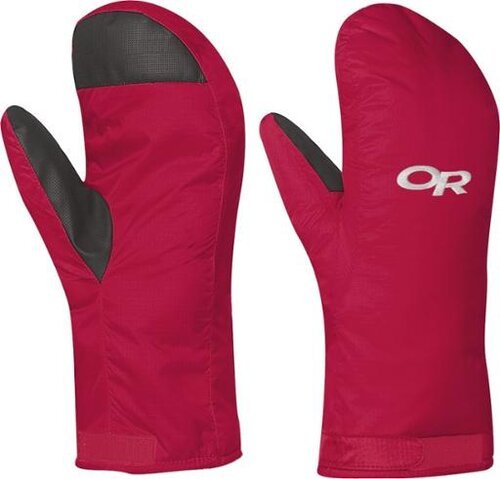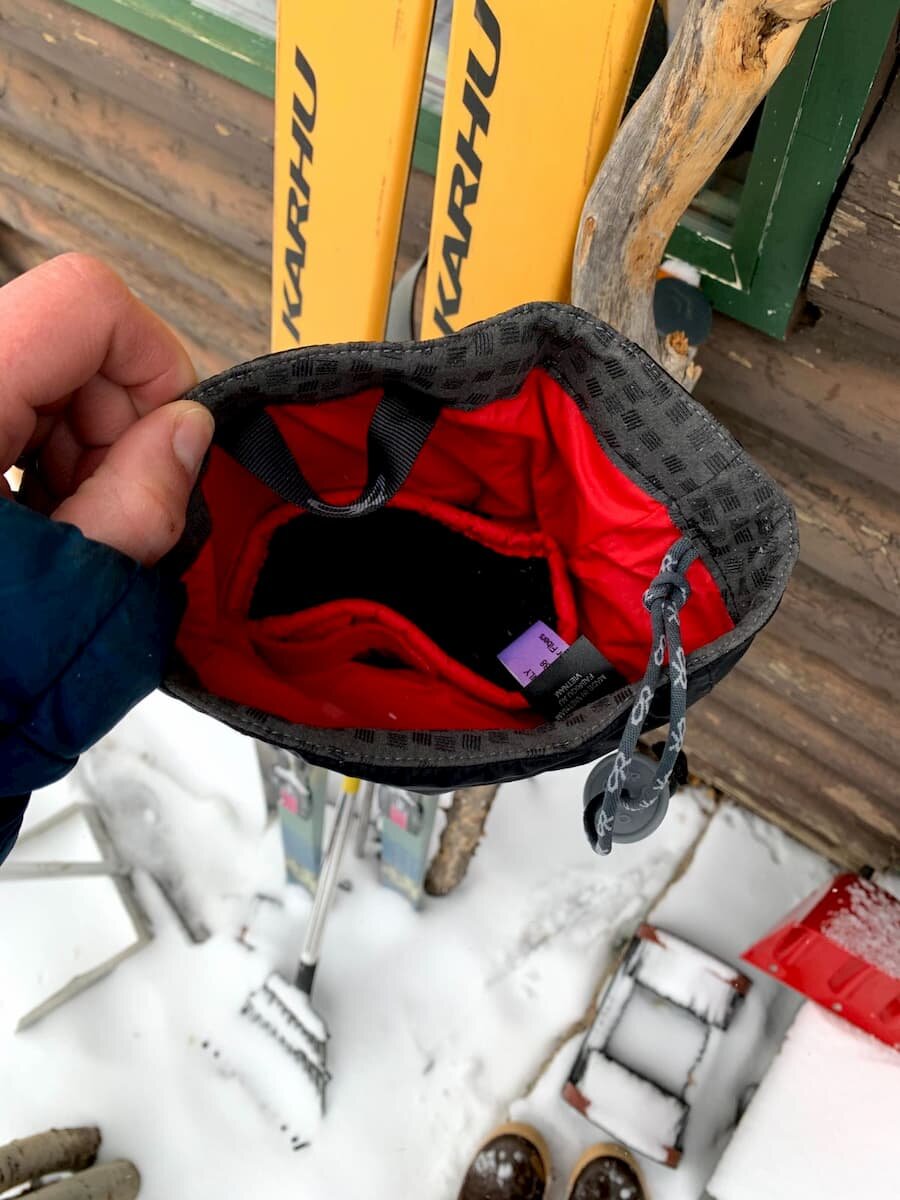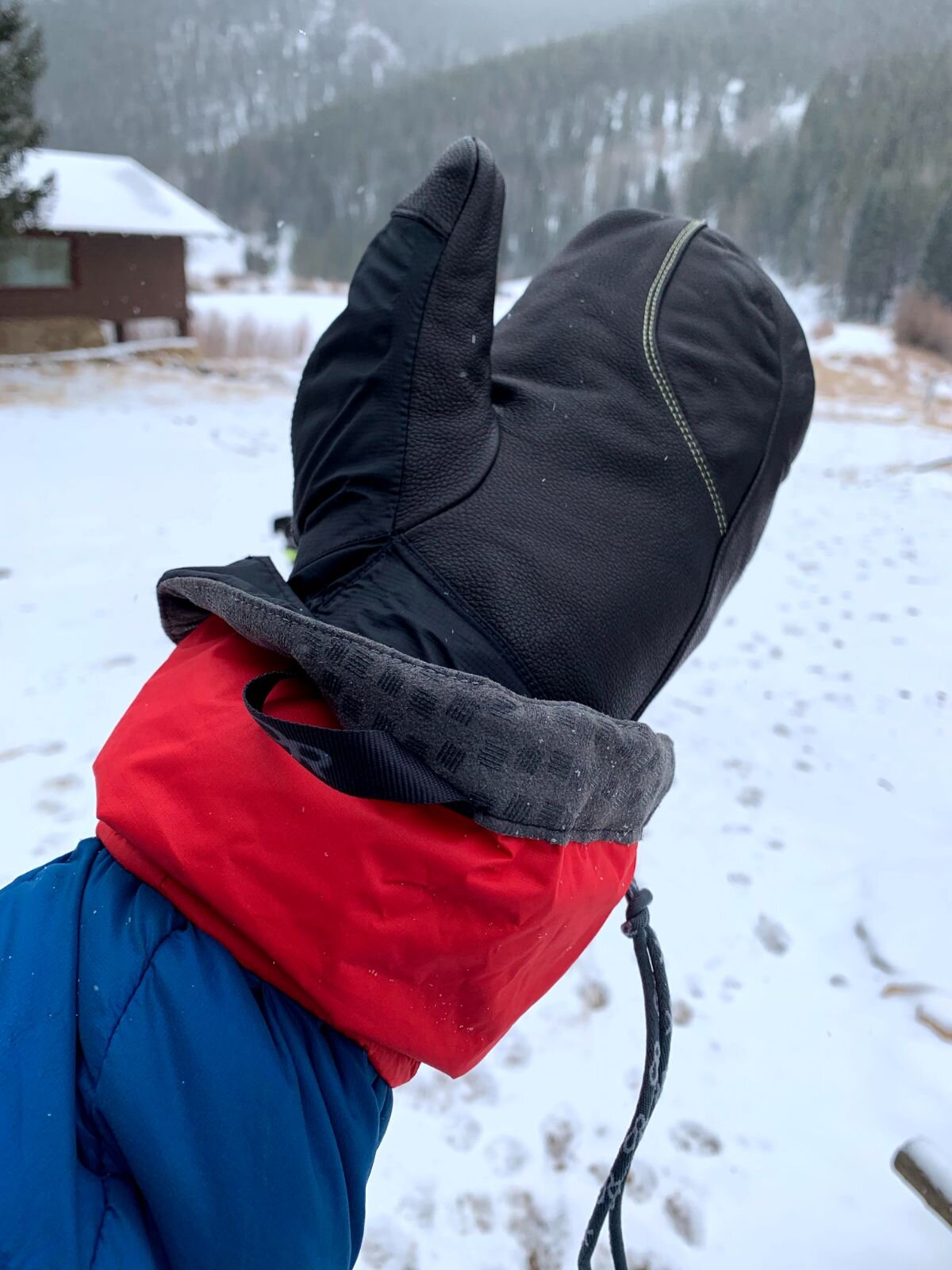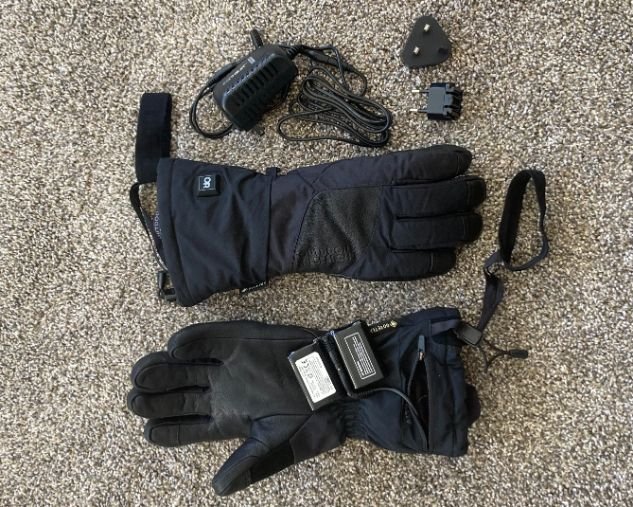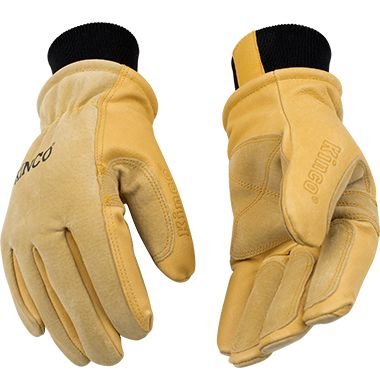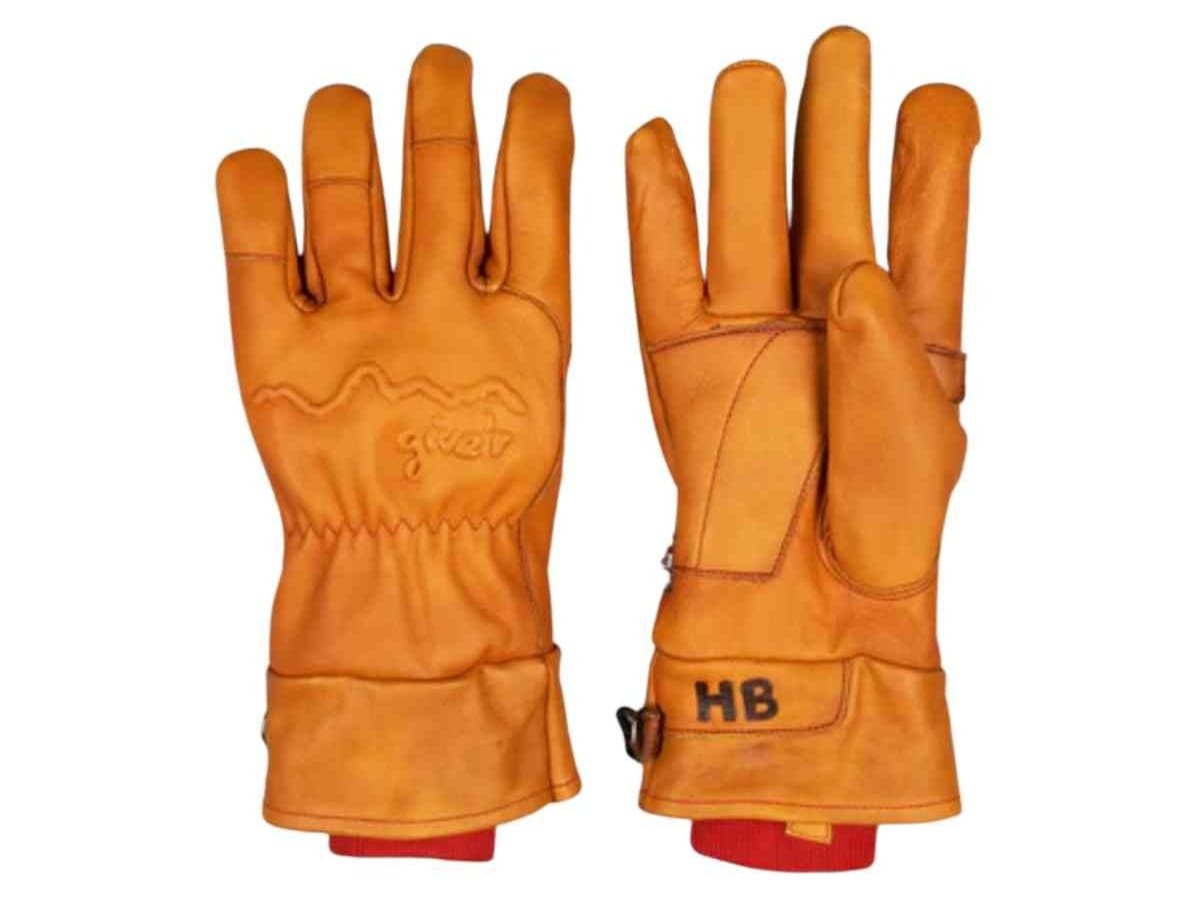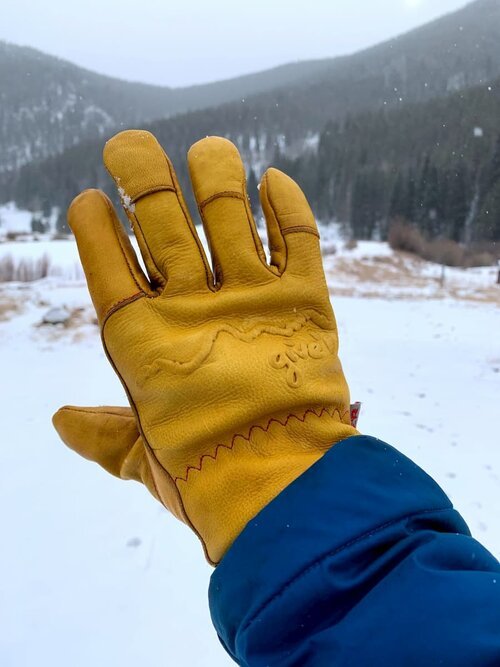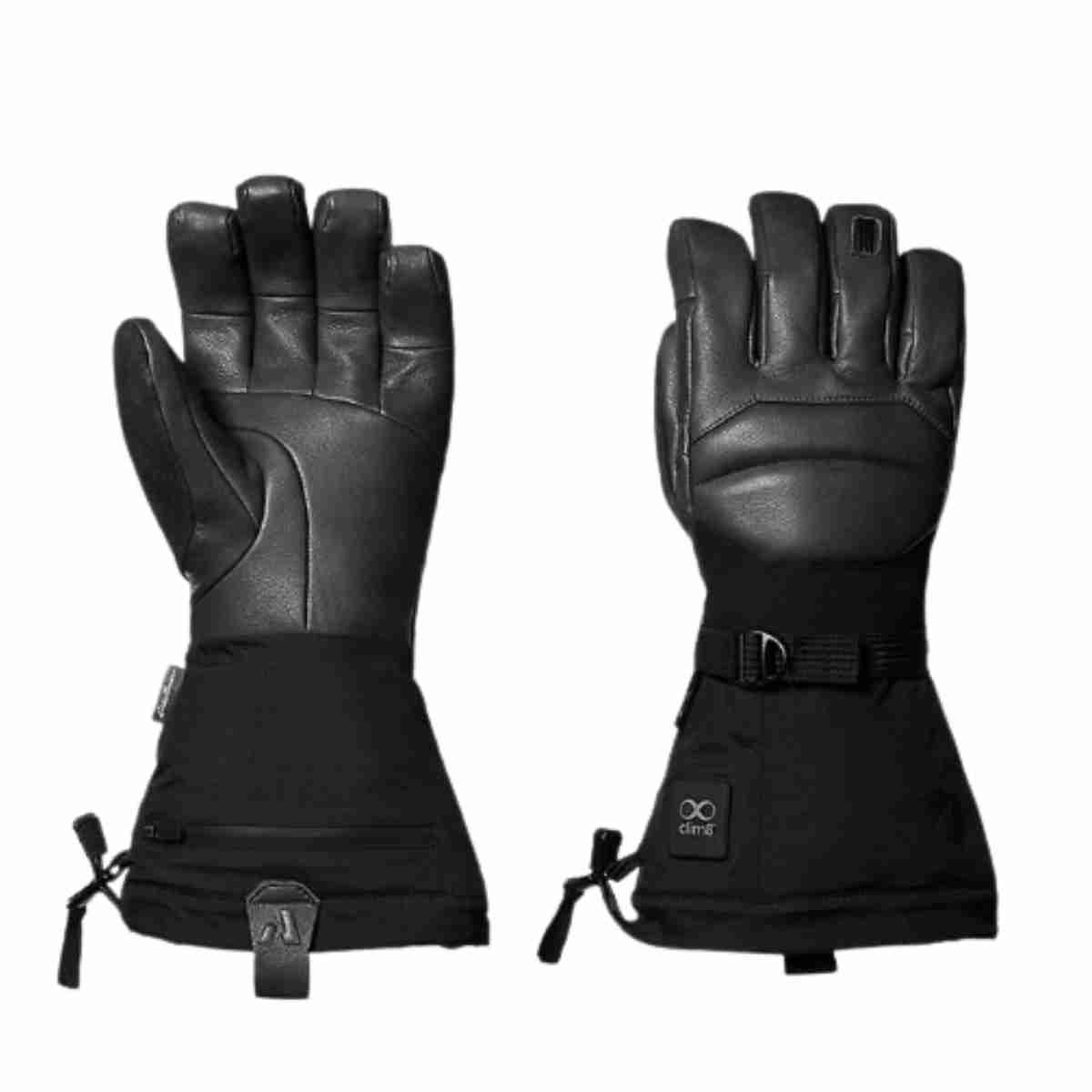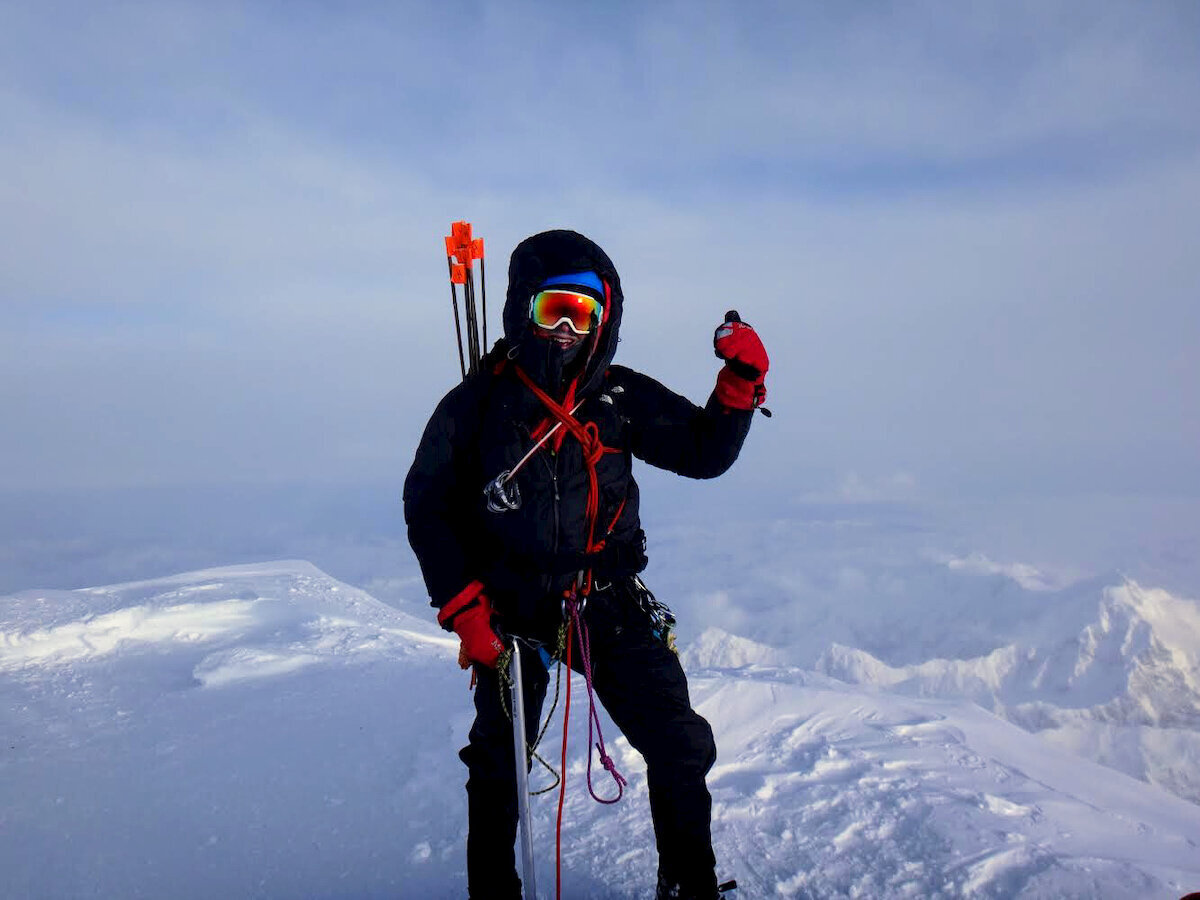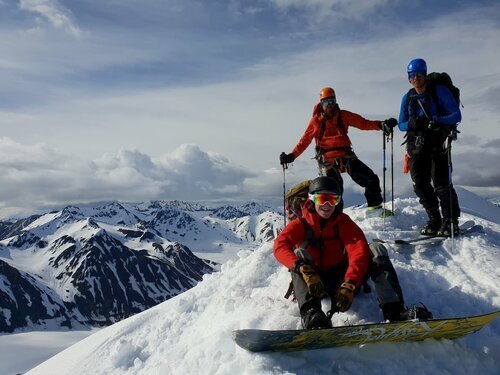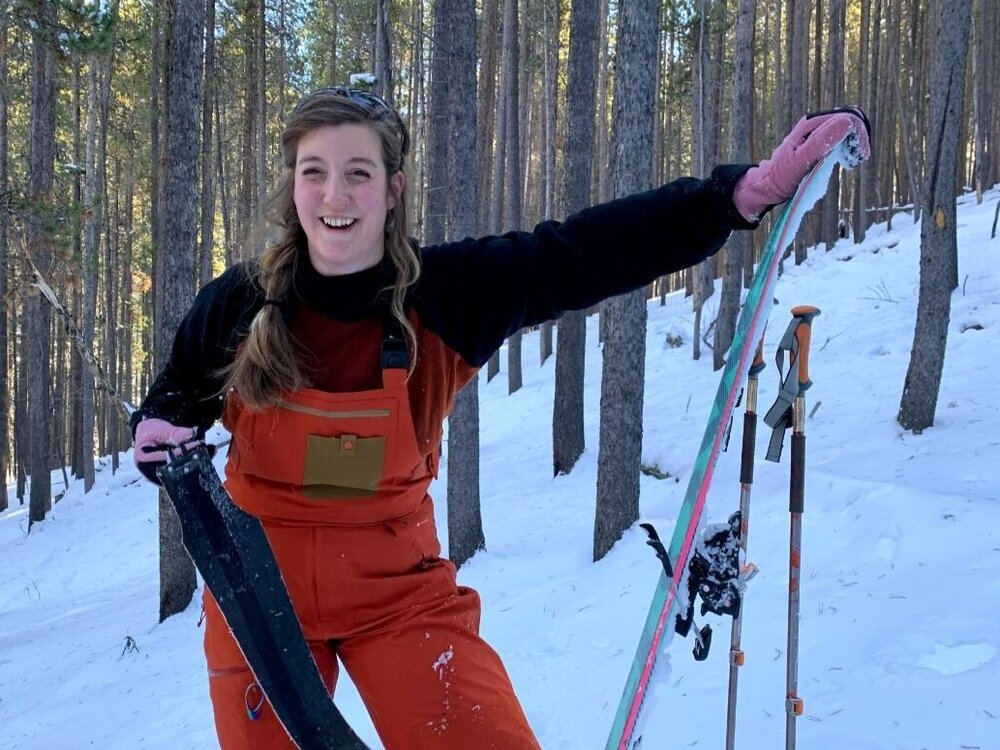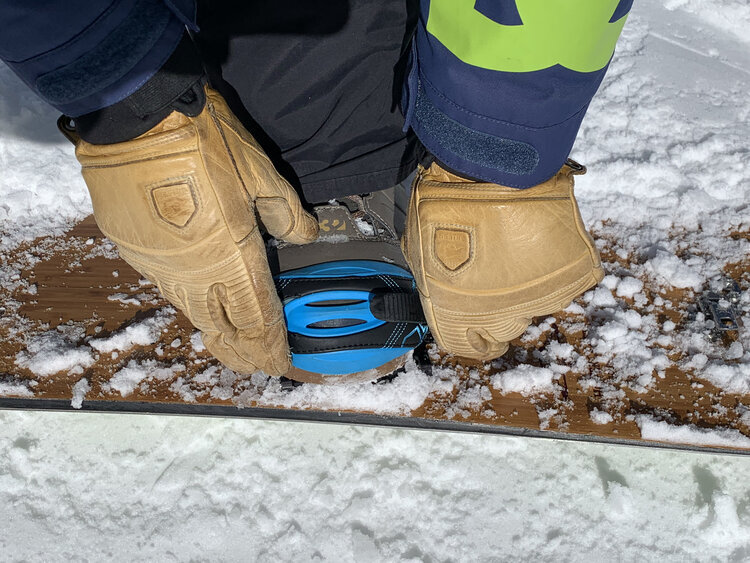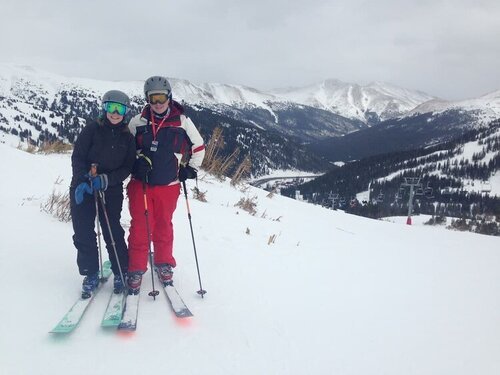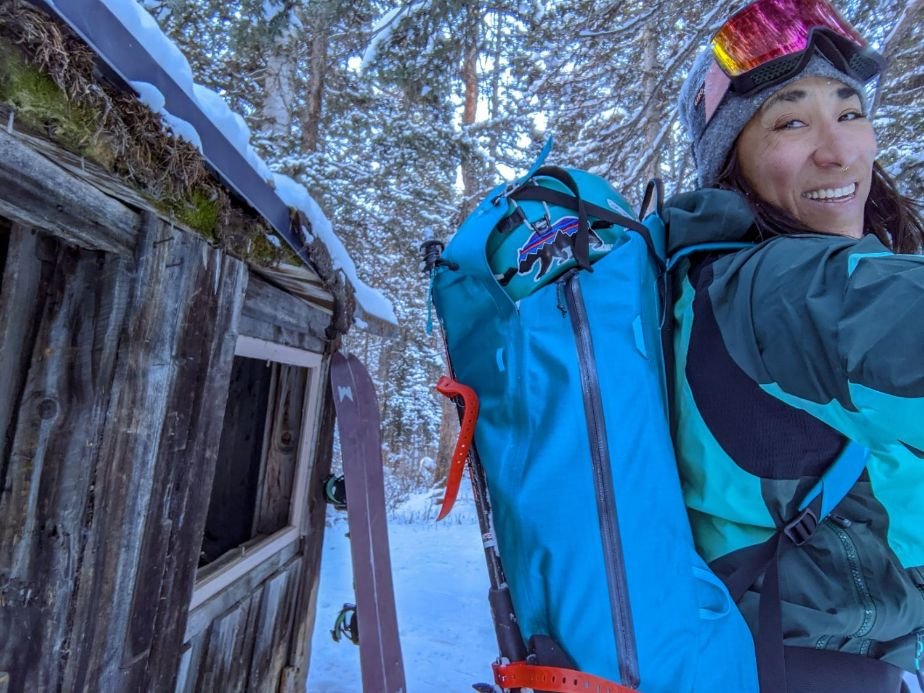Best Ski Gloves of 2024
THE TOP SKI GLOVES AND MITTENS FOR COLD HANDS AND EXTREME WINTER WEATHER
November 13th, 2023
Home > Gear Reviews > Ski & Snow
To keep your fingers from freezing on the mountain, good ski gloves are a must. We combed through reviews of over 100 pairs to find the 7 best waterproof ski gloves for men and women.
Our winners for best ski gloves are perfect for every level of skier, from resort to backcountry to mountaineering. For powder days, wet, slushy days, and everything in between, we’ve got a top overall best ski glove, budget winner, the best heated ski gloves and mittens for people with cold hands, and gloves that can withstand extreme cold weather.
Spending winters in the cold climates of Alaska, Colorado, and Maine, I’m no stranger to frozen fingers. I’ve taught ski school in a blizzard, tied into a rappel line in freezing temperatures, responded to semi-trucks on fire on a frigid Christmas Day, and dug out cars from sugar-snow ditches at midnight. Here are the ski gloves that work best
Need gloves for activities other than skiing? Check out The Best Lightweight Winter Gloves for Running, Cycling, and Hiking
We create reader-supported, objective gear reviews independently selected by our editors. This story may contain affiliate links, which help fund our website. When you click on the links to purchase gear, we may get a commission — without costing you an extra cent. Thank you for supporting our work and mission of outdoor coverage for every body! Learn more.
Ski Gloves Comparison Table
We researched 110+ models of gloves. Below are the 16 models that made it to our second round of judging. From there, we decided on our 7 winners and 3 Honorable Mentions.
We note any discounts we see on our Deals page, which is updated daily.
MEN'S
| MEN'S SKI GLOVE | TREELINE AWARD | WATERPROOF SHELL MATERIAL | INSULATION | REMOVABLE LINER | CLOSURE |
|---|---|---|---|---|---|
| Hestra Fall Line | Best Overall Ski Gloves Read why |
Impregnanted cowhide | G-3 Polyester | Yes | Neoprene cuff, hook and loop |
| Arc'teryx Fission SV | Best Upgrade Ski Gloves Read why |
Gore-Tex Active | 200 g PrimaLoft Silver, 133 g PrimaLoft Gold | No | Pull top Open/Close |
| Black Diamond Mercury Mittens | Best Ski Gloves for Powder Days Read why |
BDry insert | 340 g PrimaLoft Gold | Yes | Cinch wrist strap, Drawcord |
| Black Diamond Guide Gloves | Best Ski Gloves for Mountaineering Read why |
Gore-Tex, Goat Leather | PrimaLoft One (170g), fleece | Yes | Drawcord |
| Outdoor Research Alti II Mittens | Best Ski Gloves for Cold Hands Read why |
Gore-Tex Membrane | PrimaLoft Gold | Yes | SuperCinch, Elastic Cuff |
WOMEN'S
| WOMEN'S SKI GLOVES | TREELINE AWARD | WATERPROOF SHELL MATERIAL | INSULATION | REMOVABLE LINER | CLOSURE |
|---|---|---|---|---|---|
| Hestra Fall Line | Best Overall Ski Gloves Read why |
Impregnanted cowhide | G-3 Polyester | Yes | Neoprene cuff, hook and loop |
| Arc'teryx Fission SV (Unisex) | Best Upgrade Ski Gloves Read why |
Gore-Tex Active | 200 g PrimaLoft Silver, 133 g PrimaLoft Gold | No | Pull top Open/Close |
| Black Diamond Mercury Mittens | Best Ski Gloves for Powder Days Read why |
BDry insert | 340 g PrimaLoft Gold | Yes | Cinch wrist strap, Drawcord |
| Black Diamond Guide Gloves | Best Ski Gloves for Mountaineering Read why |
Gore-Tex, Goat Leather | PrimaLoft One (170g), fleece | Yes | Drawcord |
| Outdoor Research Alti II Mittens | Best Ski Gloves for Cold Hands Read why |
Gore-Tex Membrane | PrimaLoft Gold | Yes | SuperCinch, Elastic Cuff |
The Best Ski Gloves for Men and Women
BEST OVERALL SKI GLOVES: HESTRA FALL LINE GLOVES
Waterproofing: Impregnated cowhide
Insulation: G-3 Polyester
Removable Liner: Yes
Closure: Neoprene Cuff, hook and loop
What we liked: Warmth and protection against elements while retaining dexterity and general hand use. Strong waterproof barrier
What we didn’t like: No touchscreen feature. Not a con, but these come at a price
We chose the Hestra Fall Line Gloves as the Best All-Around Ski Gloves based on their warmth, comfort, waterproofness, dexterity, and durability. With overwhelmingly positive reviews across the board, the Fall Line Gloves are above and beyond your average skiing glove in terms of effectiveness for both resort and backcountry skiing.
With a waterproof cowhide leather exterior, making snowballs won’t soak these gloves. The super-soft polyester lining wicks away moisture from your hands (which keeps them exponentially warmer), while the foam insulation surrounding each finger is designed to retain warmth, even when damp.
HESTRA FALL LINE SKI GLOVES
MEN’S
WOMEN’S
Writer Matt McDonald catching air. Photo courtesy Matt McDonald.
An adjustable neoprene cuff ensures that snow stays out of your hands and that these gloves won’t fly off mid-ski run. Bonus: exterior seams make it more comfortable to grip onto poles for an uphill climb. (As Outside Magazine equated the comfort of these exterior seams: “think seamless undies.”)
The only dings we found against the Fall Lines were that they weren’t touchscreen compatible and failed to be super warm in extreme temperatures. That...and the price.
If you’re more of a mittens fan than you are of gloves, Hestra also makes a 3-finger mitten, as well as a traditional mitten.
Looking for a less-expensive option? We tested the Give’r 4-Season Gloves and Frontier Mittens. They were a Kickstarter success story and show up in other outdoor media. They aren’t quite as warm or dextrous as the Hestra Fall Lines, but they are more affordable (and arguably more stylish). See our full review below.
Nick Rucci uses the Hestra Fall Line gloves on a snowboard. Photo by Josette Deschambeault.
REVIEWS FOR THE HESTRA FALL LINE GLOVES
The Hestra Fall Line Gloves earned these ratings: Amazon (4.5/5), REI (3.7/5), Outside Online (Best Gloves for Every Budget: High-End), Freeskier Magazine (Best Ski Gloves of 2020), Outdoor Gear Lab (83/100), Switchback Travel (Best of the Rest Glove), Adventure Junkies (Best for All-season skiing), Backcountry.com (4.5/5), Gear Institute (86%), Evo (5/5). (5/5), Snow Magazine (9/10), Moosejaw (4/5), Powder 7 (Staff Favorite).
Outside Magazine was impressed with this glove throughout multiple articles, calling it the best skiing glove “to perform tasks requiring fine motor skills, like locking and unlocking my roof box and picking individual strands of Bermuda grass.”
Switchback Travel called the Fall Line Gloves “kind of like a work of art.”
Freeskier Magazine said, “Hestra’s unisex Leather Fall Line offers dexterity and comfort in a package worthy of the biggest, baddest landscapes. These gloves are seamless on the palm which allows for better grip and padded on the back of the hand for added protection from hazards.”
REI customers were happy about the Fall Lines’ warmth and durability. They excel at dexterity, like when zipping up their ski jacket. Some raised the point that the gloves were very warm during activity, but less so with inactivity (think hiking versus walking around town).
BEST SKI GLOVE UPGRADE: ARC'TERYX FISSION SV GLOVES
Waterproofing: Gore-Tex Active
Insulation: 200 g PrimaLoft Silver/ 133 g PrimaLoft Golds
Removable Liner: No
Closure: Pull Top Open/Close
What we liked: Durable and dexterous. Primaloft and OctaLoft make these fit for severe weather
What we didn’t like: Some customers find sizing/fit odd in the palm or finger area
The Arc’teryx Fission SV Gloves earned our Best Upgrade pick for their durability, warmth, breathability, and water resistance. Arc’teryx designed the leather and softshell exterior to balance breathability with warmth and dexterity. (The 3 types of Primaloft around the ski glove help with that, too.)
The soft lining also wicks away moisture to make sure your digits stay dry. These gloves were meant to be as dexterous as they are warm – because what’s the point of gloves if you can’t use your hands? With an additional waterproof Gore-Tex insert, a supple leather palm, and a hearty over-the-cuff gauntlet, this is one heck of a ski glove to take on winter.
Reviewers especially liked the longer cuff length and upgraded insulation. With 133 grams of Primaloft Gold and 200 grams of Primaloft Silver insulation in critical places, a durable and reinforced double-layer of premium goat leather, and waterproof yet breathable GORE-TEX inserts for stormproof protection, these are the powerhouse of the glove world.
While we found reviewers say the Arc’teryx are worth their hefty price tag, our other picks might fit most wallets better. If you’re looking for a more affordably priced and warm ski glove, we’d go with the Outdoor Research Alti. But if you have the budget to upgrade, Arc’teryx reviewers and testers repeatedly mentioned the quality and thoughtful design were worth paying extra.
ARC’TERYX FISSION SV SKI GLOVES
REVIEWS FOR THE ARC’TERYX FISSION SV GLOVES
The Arc’teryx Fission SV Gloves earned these ratings: REI (4.5/5), Backcountry (4/5), Gear Institute (84%), Evo (3.6/5), Outdoor Gear Lab (Editor's Choice, 89/100), Switchback Travel (Best of the Rest Glove), Travel+Leisure (Best Ski Gloves).
Outdoor Gear Lab said, “This Editors' Choice stands out for its fantastic balance of warmth and breathability, perfect for skiing the resort or exploring in the backcountry.” They were wary of the price (and the relative warmth — they warned that these are not gloves to wear in extreme cold without activity) but overall applauded the Fission SV Gloves.
Trip Savvy summarized, “No, these certainly aren’t cheap — but they offer almost unbeatable water-resistance, warmth, protection, and dexterity when you need it most on the trail.”
Gear Institute said, “Arc’teryx’s Fission Gloves are good all-around gloves and a great choice in most conditions for skiers who prefer over-the-cuff design. They’re lightweight and comfortable with good dexterity, but don’t offer enough warmth to make them a good choice for extremely cold weather.”
REI customers mentioned the sizing was off — either the sizes were too small, or the palms would fit, and the fingers were too large and bulky. We recommend trying them on before taking them outdoors and ordering from a reputable retailer with an easy return policy that allows for experimenting with a few different sizes.
BEST SKI GLOVES FOR EXTREME WEATHER AND POWDER DAYS: BLACK DIAMOND MERCURY MITTS
Waterproofing: BDry insert
Insulation: Primaloft
Removable Liner: 340 g Primaloft Gold
Closure: Cinch wrist strap, drawcord
What we liked: Excellent warmth for a glove without a battery pack hand warmer, waterproofness, durable construction
What we didn’t like: Runs small, some find that the insert packs out prematurely
We chose the Black Diamond Mercury Mittens as the Best Gloves for Extreme Weather and Powder Days based on their warmth, waterproofness, versatility, and bomber reinforced stitching. With a rating down to -29०F there were overwhelming calls of “the warmest mitten ever!” across the media we reviewed.
The Mercury Mitts are also among the most durable skiing gloves we tested. They have a fully waterproof insert and removable liner made of high-loft fleece and Primaloft insulation and sport a separate index finger. On top of that, they have a stretchy Pertex shell and a goat leather palm reinforced with Kevlar stitching. The result is a ski glove that can handle a lot of use and will last years.
BLACK DIAMOND MERCURY SKI MITTENS
UNISEX
WOMEN’S
The author in her happy place wearing the Black Diamond Mitts. Black Diamond calls their Mercury Mitts their “most versatile and popular year-round mitt.”Photo courtesy Josette Deschambeault
Black Diamond calls their Mercury Mitts their “most versatile and popular year-round mitt.”
These gauntlet cuffs fit snugly over (or under) coat sleeves. Unlike other winter gloves that we considered, there’s also a cinching wrist to keep snow from blowing down into your hand should you, say, yard sale all over the ski hill. Cold fingers won’t be an issue with the BD Mercury Mitt for those blower powder runs or polar vortexes.
While we think the Outdoor Research Prevail Heated Gore-Tex Gloves (review below) are the Best Glove for Raynaud’s, the Mercury Mitts were close. The Lucent run on a battery pack, so are heavier and more expensive. We also recommend the Outdoor Research Alti Mitts (review below) for those with cold hands.
Even the best gloves have downfalls, however. They tend to run small, so consider sizing up. A few people still mentioned that their hands ran cold, even with the inserts (which were sometimes linked to complaints that the inserts packed out fast, providing less warmth). And, of course, they aren’t touchscreen compatible.
As an honorable mention, the Dakine Titan Gloves came in a close second to the Alti Mitts, but in the end, there were considerably more reviews pointing favorably to the Alti Mitts.
REVIEWS FOR THE BLACK DIAMOND MERCURY MITTS
The Black Diamond Mercury Mitts earned these ratings: Amazon (4.2/5), Adventure Junkies (Best for All-season skiing), Switchback Travel (Best Winter Glove for Cold Conditions), Trip Savvy (Best Overall), Gloves Magazine (Best Mittens of 2019), Backcountry Gear (4.5/5), Best Snow Gear (4.8/5), Backcountry (4.5/5), Outdoor Gear Lab (79/100), Black Diamond (4.4/5), Moosejaw (4.4/5).
Amazon users were quick to say that their gloves were generally too small and needed to size up. However, with proper sizing, they were mighty impressed by the Mercury Mitt's extra warmth and dexterity while handling a ski boot or a ski jacket. One customer wore them in Michigan in 2 degrees in 30 mph winds. As she said, “There could be no exposed skin in this kind of environment. Hands were toasty.”
Switchback Travel called them incredibly warm, even “overkill for all but the coldest winter conditions.”
Outdoor Gear Lab awarded these mittens their Editors’ Choice because of “its bomber, feature-rich design. It's also the warmest mitten in our review.”
BEST SKI GLOVES FOR MOUNTAINEERING: BLACK DIAMOND GUIDE GLOVES
Waterproofing Shell Material: Gore-Tex, Goat Leather
Insulation: PrimaLoft 340 g Gold
Removable Liner: Yes
Closure: Synch wrist strap, Drawcord
What we liked: Built for extreme conditions. Gauntlet cuff seals under or over the jacket sleeve. A long-time favorite for guides and high altitude mountaineers
What we didn’t like: Rugged construction sacrifices some dexterity
The Black Diamond Guide Gloves earned our award for Best for Mountaineering because of their rugged durability, their waterproofness, and most of all, their warmth. These gloves were repeatedly referred to as “the workhorse” of the skiing glove world. The author’s friends — ski and mountaineering guides based in Alaska, Nepal, and Argentina — swear by these gloves on their high-altitude trips, their Canadian ski adventures, and their cold-weather safety-rigging jobs.
The Guide Glove is constructed from goatskin leather and nylon (exterior), as well as Primaloft and boiled wool (interior). The Guide Gloves also sport a Gore-Tex insert, making them one of the best gloves for wet-snow conditions. The extended gauntlet cuff was a major plus, as it fit under or over jackets to keep out snow, sleet, and wind.
The biggest (and, really, only) complaint we found with these gloves is that the super-warmth translated into bulkiness, which negatively affected dexterity while handling a ski boot or zipping up a ski jacket. (That being said, the author’s guide friends and several other reviewers said that breaking them in over time helped with dexterity without impacting the warmth too profoundly.)
Not sure whether to go for the unisex or women’s? This guide shows how sizing works for Black Diamond gloves.
BLACK DIAMOND GUIDE SKI GLOVES
UNISEX
WOMEN’S
REVIEWS FOR THE BLACK DIAMOND GUIDE GLOVES
The Black Diamond Guide gloves are ideal for rugged durability and warmth. Photo courtesy Brady McGuire.
The Black Diamond Guide Gloves earned these ratings: Outdoor Gear Lab (Top Pick for Cold Weather Skiing and Snowboarding, 84/100), Amazon (3.6/5), REI (4/5), Black Diamond Equipment (4.2/5), Backcountry (4/5), Gear Institute (87%), Evo (4.8/5), Switchback Travel (Best Ski Gloves of 2019-2020), Moosejaw (4.3/5), Colorado Mountain School (Thumbs Up), Off Piste Magazine (Favorite Leather Ski Gloves for Backcountry Skiing), Alpine Institute (Recommended for Mountaineering & Alpine Climbing).
Outdoor Gear Lab summed up the Guide Gloves perfectly: “For really cold activities, where giving up some dexterity for some serious warmth is a must, these gloves are hard to beat.” They were tested by a 7-time Denali climber who wore them for every summit bid, down to -47℉. The thickness of the ski glove (which provides durability and killer insulation) made it a little difficult to be super dexterous, but the tester wouldn’t guide without them. Outdoor Gear Lab nearly named these their Editors’ Choice, but ultimately gave that honor to our Best Upgrade pick, the Arc’teryx Fission SV Gloves. (They did, however, recommend this ski glove for Raynaud’s sufferers who prefer gloves.)
Gear Institute called the Guide Gloves “heavy duty work-horse gloves that will last years and keep your hands warm in nearly any condition.” They also mentioned the sacrifice of dexterity for bulk and warmth but deemed it a worthy sacrifice.
Colorado Mountain School Guide, Russell Hunter, says he couldn’t do his job without the Guide Gloves.
Backcountry customers said they had bought a pair for their relatives after putting their own pair through the wringer! They also mentioned sizing up, as many people felt they were a little too small. Guides, ski patrollers, and football fans in freezing stadiums were all big fans.
BEST SKI GLOVES FOR COLD HANDS & RAYNAUD’S: OUTDOOR RESEARCH ALTI II MITTS
Waterproofing Shell Material: Gore-Tex Membrane, Pittards Armortan Leather
Insulation: Primaloft Gold
Removable Liner: Yes
Closure: SuperCinch and Elastic Cuff
What we liked: Liner and shell separate to make a versatile glove. The warmest non-heated glove we tested
What we didn’t like: May be too warm for many days. Some customers find that they run small
We chose the Outdoor Research Alti II Mitts as the Best for Powder Days and Raynaud’s because, well, they’re just warm. (Not to mention their waterproofness, durability, versatility, and comfort.)
The Alti II Mitts are a double-mitten construction — an outer Gore-Tex shell and a water-resistant liner mitten — that means you can wear them in three ways: just the shell, just the liner, or both. The liner and the shell connect with easy velcro, so no fussing with buttons or zippers or the like; just slide on the shells, and the velcro around your wrists connects the two. This gives the ski mitten a variety of situations to excel in, but most of all combine into a snowy-cold champion. (Trust us; the author was sweating when she finished shoveling snow off her pond hockey arena. Even in single-digit weather.)
OUTDOOR RESEARCH ALTI SKI GLOVES
MEN’S
WOMEN’S
These gloves have PrimaLoft insulation in both the liner and the shell (340 grams, and 170 grams, respectively) to insulate against harsh conditions. You can also cinch them to fit onto your hand more easily, and the inner liner uses velcro to secure around your wrist more easily.
For those who have Raynaud’s syndrome, these mittens are toasty enough to keep even poorly-circulated hands warm in severe weather. The author’s friend, who does not have Raynaud’s but has very poor circulation, was thrilled to finally have warm hands in sub-zero temperatures. (It helps that these mittens come down to mid-forearm, so the warmth from your puffy jacket extends to the warmth of your mittens.)
But, this ski mitten might be overkill as your daily-driver gloves unless you are highly susceptible to cold or suffer from Raynaud’s. For skiing in well-below-freezing temps, however, these mittens were called “lifesavers.” The same can now be said for hauling wood and walking the dog in super-cold circumstances, according to one Colorado-based, cabin-dwelling tester.
For 2022/23, Outdoor Research updated the Alti Mitts for better fit and increased dexterity. They renamed the model the Alti Mitts II. We found the original Alti ran a little large. Customer reviews suggest that the updated Alti II may run a little small. We’re testing the new Alti II right now. Otherwise, construction and performance appear to remain the same.
REVIEWS FOR THE OUTDOOR RESEARCH ALTI MITTS
The Outdoor Research Alti Mitts earned these ratings: Outdoor Gear Lab (76/100), Gloves Mag (Best for Raynaud's), Outdoor Gear Lab (Top Pick, 84/100), Amazon (4.6/5), Backcountry (4.4/5), REI (4.8/5), Backcountry Skiing Canada (8.5/10), Backpacker Magazine (Best for Extreme Cold), Gear Junkie (World’s Best Winter Mitts), Moosejaw (4.7/5), Gloves Mag (Best Warmest Mittens), Outside Pursuits (Best Snowmobile Gloves).
Backpacker Magazine’s guide/tester raved about these gloves worldwide. Literally — she tested them in Alaska, Argentina, and Antarctica, where she put them to the test up to -40 °F.
Outdoor Gear Lab bestowed an Editor’s Choice award on the Alti Mitts, declaring them the mitten you want with you on top of the world’s tallest peaks. (But also said that they love them for everyday snowsports, too.) They loved that the liner has a water-resistant shell, making it easy to wear the liner alone for skinning uphill or shoveling snow. “If you're looking for the warmest and most versatile mitten on the market that will suffice on the coldest days at the top of high peaks to warmer days near sea level, this is our top recommendation.”
Military Times said, “If you are short on time, you can stop reading with the knowledge these Outdoor Research Alti Gloves are the best cold weather gloves I've ever worn, and they have earned a permanent place in my cold weather pack.” That’s high praise from a military professional.
Amazon users were warm down to -40 °F windchill on bike rides and living in the Arctic Circle. There were a few comments about the thumbs being cold while the rest of the fingers were toasty, but even those reviews were impressed by the relative warmth.
BEST HEATED GLOVES FOR RAYNAUD’S SYNDROME: OR Prevail Heated GORE-TEX Gloves
Touchscreen Compatible? Yes, leather index and thumb fingertip
Material: Outer: Woven polyester and nylon. Palm: Goat leather. Insulation: Enduraloft
Insulated: Yes
Closure: Drawcord
What we liked: Heating system integrated into liners, breathability to keep from sweating, still warm gloves without heating element
What we didn’t like: The price barrier is high, but for those who need the warmth, it can be worth it. Some users encounter fit issues.
Downhill skiing at the resort. Fresh off a cold chair lift and getting ready to descend in the OR Prevail Gloves on an 18°F, snowy, overcast day. Photo by Trey French
For many people, heated gloves may be overkill. But for extremely cold temperatures (or Raynaud’s sufferers!) the Outdoor Research Prevail gloves are the key to staying warm and happy out in the snow. Outdoor Research updated these gloves for the 2022/2023 season in the form of the OR Prevail Heated GORE-TEX Gloves from our previous winner, the OR Lucent’s.
We chose the OR Prevail Heated GORE-TEX Gloves as our best pick for Heated Gloves and Raynaud’s (we also chose it in our Best Ski Gloves Guide!) because of the customizable heat settings, waterproofness, windproofness, breathability, rechargeable batteries, battery life, and warmth without the heaters on. (Not to mention, they’re touchscreen compatible!)
We will warn you—the price nearly bowled us over. But if you have the money (and the need) for ultra-warm gloves, these are your pick. Outdoor Research also has an “Infinite Guarantee,” so the money you drop now will be worth it in the long run.
To turn on the battery, simply press the “OR” button on the top of your forearm—the LED will light up, so you know it’s working.
OUTDOOR RESEARCH PREVAIL HEATED GORE-TEX GLOVES
GLOVES
MITTENS
Beautiful snowflakes around the intuitive heat setting button. Red (default) = most cozy, Yellow = medium. Green = low. Photo by Trey French
The Prevail Heated Gloves have a Gore-Tex insert for water- and windproofness, but that allows for breathability—that way, your hands stay warm without getting sweaty! The Lucent Heated Gloves also have Enduraloft insulation (“[333 grams on the back of each hand, 200 grams at the palm, 133 grams at the gauntlet]” according to Gear Patrol) for extra insulation. After all, these gloves need to be warm even when the battery isn’t operating.
The glove shell is made from nylon with goat leather palms and fingers, and there’s molded foam protection over each finger for more warmth and durability. (A long gauntlet and wrist leashes don’t hurt, either!)
Reviewers really loved that the heating wires were woven into the liner rather than between the liner and the outer shell glove, like many other heated gloves on the market. And the battery life isn’t shabby, either—they last about 8 hours on the “low” setting, about 4.5 hours on the “medium” setting, and about 2.5 hours on the “high” setting. (Most other heated gloves only last up to 2.5 hours, too!)
Raynaud’s sufferers were thrilled to find a warm glove without the battery packs and a lifesaver with the heaters going. To recharge, plug the charger into a wall outlet and insert the battery packs. General time from 0% to 100% battery is about six hours, and the indicator light will turn green.
One of our testers, notorious for piling on layers when everyone else is stripping them off on the uphill, was skeptical about testing heated gloves. He’s an avid adventurer who’s used to the Pacific Northwest chill but found Colorado’s high altitude even more of an issue for his cold fingers. He was shocked when he put them on (in 15 degrees at an outdoor brewery). “My big problem is that gloves are cold when I go to put them on, which means I have to warm up the glove to warm up my fingers. Having pre-heated gloves is a game-changer. I don’t have to flap my arms anymore while everyone else is eating snacks just to feel my fingers.”
Of course, the price is a deterrent for most people. Other dings were the weight (the batteries add about 9 ounces each), and the dexterity (more insulation = less dexterity). Still, multiple everyday users wrote in that these gloves were lifesavers that allowed them to be outdoors in the winter even as they experience Raynaud’s.
A common site at any resort, dropped disposable hand warmer wrappers littering the ski runs. (We packed this one out after finding it) Heated gloves are an alternative. Photo by Trey French
One Amazon reviewer was told by her doctor that the only way to stay pain-free from her Raynaud’s was to stay warm with heated gloves. She said, “I have tried everything you can imagine, from all types of gloves, Hot Hands packs with the iron pellets in them, and even tried two pairs of gloves, but so far, nothing has been as good as this new pair of [Outdoor Research Lucent Heated] gloves.” For up to two hours near 0℉, she was pain-free! “Even with the high price, all I can say is they work, they are the only thing that's worked so far, and that's saying something.”
HEATED MITTENS OR GLOVES?
So what about the Prevail Mittens? Our other tester prefers the mittens version of the Heated Prevail because of the fit. Some testers find that the fingers on the gloves can feel tight or stiff. Those with muscular fingers (like rock climbers) may also find the finger fit of the glove to run tight for the declared size. One of our testers is a climber who had no issues with the finger fit of the older Lucents.
A female Treeline tester did struggle at first with getting the gloves on over her fingers in the new Prevails until they began to pack out with a few full days of lift-served skiing. She also found the fingers to be a little short for her, but the overall fit of the remainder of the glove fit as described in OR’s sizing chart. Read our section below on the debate behind Gloves vs. Mittens and the pros and cons of both.
Note that the Prevails are not meant to be used for backcountry skiing where an avalanche beacon is being used due to potential interference with the beacon, which poses a safety issue. That said, resort uphill skiing where no beacon is needed works great. In fact, one tester found herself a 30 minutes uphill skin and ski away from the truck at a resort at sunset with numb and painful fingers before switching the Prevails to the high setting and regaining feeling and comfort to get back safely.
The glove and mitten versions of the Prevails come with two batteries (one for each hand) that are rechargeable via a wall outlet. Outdoor Research includes two different outlet attachments for international use, as well. A convenient carry bag zips up all of your key components so you won’t lose the charger en route to the ski hill. Outdoor Research sells replacement batteries if batteries were to get lost or if you need more battery life for a day of skiing than a single set can provide. OR also recommends replacing the batteries yearly if you want to keep their original battery run time, as with all lithium ion batteries.
The OR Prevail Glove kit minus the simple mesh carrying sack. Photo by Trey French
REVIEWS FOR THE OUTDOOR RESEARCH PREVAIL HEATED GLOVES
The Outdoor Research Prevail Heated Gloves earned these ratings: Amazon (4/5), Moosejaw (4.6/5), Gear Patrol (Worth It), Outdoor Gear Lab (86/100), Ski Monster (Kicks Raynaud’s Butt), Climbing Gear Reviews (4/5).
Amazon reviewers were upset by the price, but repeatedly called these the best heated gloves they had used. They also praised the battery efficiency, the warmth without the heaters turned on, and the Outdoor Research warranty.
• Gear Patrol was impressed by these heated gloves, but mostly for backcountry ski tours rather than Arctic expeditions: “The bottom line with the Prevail Heated Gloves is that their efficient battery-powered heat has kept my poor, freeze-prone hands warm and toasty through the coldest Upstate New York winter I can remember, even on days when the mercury didn’t bother climbing into the double digits.”
BEST BUDGET SKI GLOVE COMBO: KINCO PIGSKIN LEATHER GLOVES & TERRAMAR THERMASILK GLOVE LINERS
Waterproofing Material: Pigskin Leather
Insulation: HeatKeep+100% Filament Silk Interlock (from the Terramar Liner)
Closure: Elastic Cuff and Tightener
What we liked: Affordable warmth, durability, and versatility
What we didn’t like: You’ll probably need more warmth if getting out in the low 20’s°F
We chose the Kinco Pigskin Leather Gloves as our best budget pick because of the bargain price, the materials, the durability, and the rave reviews from bargain hunters across multiple media channels.
Ski bums, ski patrollers, lifties, snowmakers, cat drivers, bus drivers, ranchers, farmers, truckers, snowplow operators, and anyone who’s ever stopped at Walmart to buy gloves before skiing will tell you, Kinco’s are the way to go. Numerous publications (including Outside Magazine and Powder Magazine) have written rave reviews for these budget gloves, and some have even written articles that border on love poems.
While the Kinco Pigskin Leather Gloves will not be the warmest glove you’ll own, they’ll certainly be the best bargain: ~$40 for gloves renowned for their durability isn’t a bad deal.
While the fingers and palm are made from the namesake pigskin leather, the back of the hand is canvas, allowing for breathability. (If you’re concerned about waterproofness, check out our How to Waterproof Your Gloves section!) The knit wrists are constructed from polyester, which helps to retain heat and keep snow out but is not very water-resistant. They are filled with Heatkeep thermal insulation and have a soft inner lining to wick away moisture. Reinforced fingertips, knuckles, and palms give these gloves their durability. They were, after all, designed as work gloves.
If you’re worried about warmth, consider adding a budget liner glove, like the Terramar Adult Thermasilk Glove Liners. They’re priced in a ~$25 bracket, they’re thin enough to fit into the Kinco’s Pigskin Leather Glove, and provide a touch more insulation. See our Best Winter Gloves guide for our full review of the Terramar liners.
KINCO PIGSKIN AND TERRAMAR GLOVES
KINCO PIGSKIN
TERRAMAR SILK LINER
REVIEWS FOR THE KINCO PIGSKIN LEATHER GLOVES
Nicole Montgomery loves snow and her fingers stayed warm in the Kinco Pigskin mittens, the mittens version of our budget glove pick. Photo courtesy of Nicole Montgomery.
The Kinco Pigskin Leather Gloves earned these ratings: Powder Magazine (Big Thumbs Up), Outdoor Gear Lab (Best Budget, 46/100), Amazon (4.4/5), Kinco (4.7/5), Ski Journal (Leather, Sno-Seal and Perfection), Last Frontier Heliskiing (Thumbs Up).
Amazon users couldn’t say enough good things about these gloves for their price. Many said it’s the best ski glove (for about 20 °F and warmer) for the best price they’ve found. Some resorts have even caught on and started carrying them! However, several Amazon reviewers warn about waterproofing them with Sno Seal before use.
Last Frontier Heliskiing (in their guide of “what to bring and what not to” calls the Kinco Pigskin Leather Glove, “Pretty much the workhorse of professional ski patrols across North America. It’s cheap, tough, and comfortable.”
Outside Magazine concisely proclaimed, “Kinco's Insulated Pigskin Leather Ski Gloves are as tough as they are well priced, but you'll have to waterproof them yourself.”
Powder Magazine told the tale of a ski professional noticing Kinco Leather Gloves at the beginning of his ski coaching career, only to notice that all of the old-timers (aka, the best skiers on the hill) were all wearing them.
The author’s ski friends — one of whom has worked as a lift operator in Colorado for over two decades — swear by these gloves. “I’ve bought two pairs in twenty years. That’s it. I shouldn’t have to say anything else about them.”
Honorable Mentions
Of the more than 100 ski gloves we considered, these 3 pairs deserved their own write-up, even if they ultimately weren’t chosen as winners.
GIVE’R 4-SEASON GLOVES
Touchscreen Compatible? No
Material: Cowhide leather and 3M Thinsulate
Insulated: Yes
Closure: Elastic cuff and leather pull tabs
Looking for a less-expensive option? Give’r, a Kickstarter success story based out of Jackson Hole, Wyoming, offered up their Give’r 4-Season Gloves and Frontier Waxed Mittens for us to test. We loved the instant warmth and the freedom our fingers had in the Frontier Mittens and the rugged durability that comes from a great 100% waterproof (and 100% puppy-proof) leather exterior.
While we found the 4-Season Gloves not to be quite as warm as the Hestra Fall Lines (review above), and the fingers weren’t super dexterous, they got the job done—from a backcountry ski adventure to wrangling snow dogs to socially-distanced parking lot beers. Plus, they win for most stylish and are available in numerous colors and styles, including Huckberry exclusives.
GIVE’R 4-SEASON SKI GLOVES
Touchscreen Compatible? No
Material: Triton polyamide with goat leather palm
Insulated: Yes, G-loft polyester
Closure: Adjustable wrist strap
You can't go wrong with a Hestra glove, and we were tempted to award the Hestra Heli Glove alongside our top winner. It's a favorite in REI's Best Gloves story, and other reviewers had good things to say. Our Treeline Review testers were happy with the Heli insulated glove, but it could be warmer. Similarly, the Heli doesn't have quite the glowing reviews of the Hestra Fall Line, our top winner. The Heli is less expensive, but it seems like customers are a lot happier paying more for a warmer glove.
HESTRA HELI SKI GLOVES
MEN'S
WOMEN'S
Thumbs up and shakas for warm hands on Island Peak, Nepal. Mountaineering Guides Brady McGuire (left) wears the Hestra Army Leather Heli Ski Gore-Tex Gloves and Rob Caldwell (right) wears the Black Diamond Helio 3-in-1 Gloves. Photo courtesy of Brady McGuire.
Touchscreen Compatible? Yes
Material: 3M Thinsulate, PU Leather Composite, Polyester
Insulated: Yes
Closure: Adjustable wrist buckles
A favorite of Amazon customers, the MCTI Winter Gloves are a good option for folks on a budget who are ok with synthetic gloves. They’re a best budget winner in our Best Winter Gloves guide, but weren’t quite enough glove for a skiing.
We didn't find the 3M Thinsulate synthetic insulation in the MCTI as warm as our winners in this story. These do have some waterproofness, plus a functional pocket, but they’re bulky with long drying times for the warmth that they offer. They’re an excellent non-skiing glove, but maybe not the most appropriate for the rigors of skiing, and the weather that comes with it.
Touchscreen Compatible? No
Material: Back Panel: 90% nylon 10% spandex. Cuff: 100% nylon
Insulated: Yes, Primaloft Gold (Polyester)
Closure: Cinch at static wrist closure plus cinch at end of gauntlet cuff
A worthy contender for the Best Heated Gloves for Raynaud’s Syndrome, the Eddie Bauer clim8 heated gloves were just edged out by the OR Prevail Gloves. The Eddie Bauer clim8 gloves are the first heated gloves in the outdoor industry to use intelligent heating technology–AI-powered gloves to sense when to heat.
Some standouts of the clim8’s are that they feature a hands off user system once you heat the gloves up with an app to determine your heating preferences. From there, the gloves turn on when you wear them.
We might be splitting hairs here, but when the battery died (happened on the Prevails, too), they did seem marginally warmer than the Prevails when not running the heating element. This could be due to slightly warmer conditions testing the EB clim8, which was around 25-30° F, or due to them fitting just slightly more roomy relative to the Prevails, and potentially encouraging better circulation.
With a similar construction, battery run time, and warmth, we were impressed by the clim8 from Eddie Bauer. That said, already being in a bulky and heavy glove category, they measured out to be 10.5oz in relation to our 8.3 oz OR Prevail gloves in a size Small (7). They were also higher volume, especially in the cuff area.
The clim8’s are also not touch screen compatible, in case you’re trying to use your phone on the lift without removing the gloves. Since the heat is controlled by the phone app, we were disappointed we had to take off the gloves in order to warm up our hands.
Overall, being similar in price to the Prevails, and with a slightly less polished finish, we feel more comfortable recommending the OR Prevails if you’re considering heated gloves.
Touchscreen Compatible? No
Material: Back Panel: 90% nylon 10% spandex. Cuff: 100% nylon
Insulated: Yes, Primaloft Gold (Polyester)
Closure: Elastic cuff
The Eddie Bauer Guide Pro Lite Smart Heated Gloves are a lighter-weight version of the Eddie Bauer Guide Pro Smart gloves above. Like the Smart Pro, these Eddie Bauer clim8 gloves are the first heated gloves in the outdoor industry to use intelligent heating technology–AI-powered gloves to sense when to heat. The main difference is that they weigh less.
Using the Eddie Bauer heated gloves on a winter backcountry trip. Photo by Kate Hoch.
We tested this pair and had similar results with the Smartphone app. Our tester found the location of the battery on the inner wrist to limit range of motion.
The clim8’s are also not touch screen compatible, in case you’re trying to use your phone on the lift without removing the gloves. Since the heat is controlled by the phone app, we were disappointed we had to take off the gloves in order to warm up our hands. There was not an easy way to monitor the battery level without looking at the app, which required taking off gloves to manage the touchscreen.
Matt McDonald and Ruth Menger. Loveland Ski Resort, Colorado. Photo courtesy Matt McDonald.
WHY DO I NEED SKI GLOVES?
Not all gloves are created equal. While some gloves are meant for opening the door to your local coffee shop or grasping a shovel to plow out the driveway, others are meant to be battered by wind, snow, slush, and ice for hours at a time — all while keeping your hands toasty, dry, and free of sweat as you slash powder turns across open bowls. We give you the ski glove (or snowboard glove, if that's what you do).
Snow gloves are generally waterproof, insulating, and dexterous. They need to be so to endure -12 degree blizzards with 30 mph winds (as the author, unfortunately, found out one blustery day in Colorado), adjust boot buckles, text friends what lift line you’re in, and grip onto ski poles on a chilly backcountry skin-track.
Of course, a ski or snowboard glove can have crossover uses (they would be great for shoveling out that driveway!), but they’re primarily used for the sport of skiing or snowboarding. For example, warm gloves are a huge necessity for Raynaud’s sufferers whose fingers are perpetually cold. Since snow gloves are designed to keep you warm, dry, and mobile, they are great options for someone with restricted blood flow to their fingers.
We combed through reviews of over 100 gloves to find the best waterproof ski glove on the market.
Gloves vs. Mittens is an age-old debate. Here are two of our favorite contenders for this story on the back of our truck: the Black Diamond Sparks (left) and Wells Lamont Hydrahyde (right).
SHOULD I GET GLOVES OR MITTENS?
In the skiing world, personal preferences abound, and none so much as a skier’s preference for gloves versus mittens. Here’s the skinny on both styles:
WHY YOU SHOULD GET GLOVES VS. MITTENS
The biggest selling point for gloves is the separation of fingers. Some folks prefer to have their fingers individually insulated, or just don’t like their fingers to touch. For most, it’s about having the full dexterity of all five digits. Where it’s nearly impossible to grip into ropes wearing mittens, for example, gloves allow the rope to flow through each finger, making knot-tying that much easier. With all five fingers mobile, activities like buckling ski boots, zipping up ski jackets, and picking up that ski pass that fell out of your pocket are infinitely easier.
WHY YOU SHOULD GET MITTENS VS. GLOVES
Every mitten-lover we spoke to chose their childhood classics for one huge reason: warmth. Keeping your fingers together in the mitten cocoon allows natural body heat to radiate and warm up the rest of your fingers. (It must be said, of course, that some mittens have liners with separated fingers for additional insulation, but they’re all wrapped up in a mitten shell.) Most liked the simplicity of not having to wrestle with individual fingers when they put on or take off their hand-warmers. The majority wanted to be able to wiggle their fingers freely!
Can't decide on Mittens or Gloves? Try the Hestra Fall Line 3 Finger.
WHAT ARE LINER GLOVES?
Essentially, the difference between gloves and liner gloves boils down to insulation. Liner gloves are meant to be worn under thicker gloves (like the Kinco Pigskin Leather Gloves) to boost warmth. If you need to take off the outer gloves to perform fine motor skills (holding a key, picking up a paper, zipping up jackets), then liner gloves ensure that your skin isn’t exposed to the elements, providing warmth and dexterity in the short-term.
While you can wear liner gloves on their own (generally on warmer days, like spring skiing), most of the time, they’re too cold to do too much outdoors on their own. A glove liner is a good “extra” glove to keep in your pockets for chilly football games, driving on a cold morning, or holding the stop sign outside of school.
Generally, liner gloves are not waterproof, nor do they have a surplus of insulation. They are, however, generally better for dexterity and touchscreen compatibility than most gloves.
Mountain Guide Brady McGuire on Denali wearing the Marmot's 8000 Meter Mitts. While these are great ski gloves for a certain purpose, their extreme warmth and price are too much for almost all people and all uses, one reason why they aren’t a winner in this review.
WHAT GLOVES DO I NEED FOR RESORT SKIING VS. BACKCOUNTRY SKIING VS. MOUNTAINEERING?
Backcountry skiing generally requires more physical output than resort skiing — after all, the appeal of ski resorts is the chairlifts and warm lodges! You may have a warming hut in backcountry skiing, but I doubt they’ll serve hot chocolate there.
For resort skiing, you’ll want a glove that’s warm enough to keep your hands from freezing on a blustery chairlift but won’t be overkill as you ski down. If the weather were extreme, we’d recommend a glove such as the Black Diamond Mercury Mitt.
Our recommendation for powder-packed days is the Outdoor Research Alti Mitt. The budget skier’s option (and our budget pick) is to layer a liner glove under a thinner, waterproof glove (like the Kinco Pigskin Leather Gloves). If your hands get too cold while skiing, pop back into the lodge to warm up.
For backcountry skiing, weather and exertion will determine most glove choices. The author prefers to skin uphill in just liner gloves (or gloveless, if the weather is nice enough), but will pull on her Kincos if the weather turns colder or a storm rolls in. Those with naturally colder hands can hike uphill in a glove such as the Hestra Fall Lines, which allow for better grip on a ski pole without compromising warmth.
If it turns frigid at the top of the backcountry line, an option like the Black Diamond Guide Gloves is key to warming your hands back up before strapping up to ski back down. If you want to be super-warm on a cold backcountry ski day (or out on a multi-day hut trip), the Outdoor Research Lucent Heated Sensor Gloves will keep you cozy while you shovel out the front door and get the fire started.
We researched and tested gloves for different scenarios from resort skiing, to backcountry, to snowshoeing, to ski mountaineering (seen here).
HOW WE RESEARCHED
To ensure that we were reviewing only the best for ski aficionados, we researched the most popular gloves and mittens and came up with over 100 gloves. We sorted the top contenders into our seven groups (Best Overall, Best Budget, Best Upgrade, Best for Extreme Weather, Best for Mountaineering, Best for Powder Days, and Best Heated and for Raynaud’s). The eight winners were popular and well-reviewed across different platforms from third parties, such as Outside Magazine, Ski Journal, Backpacker Magazine, Gear Junkie, and Outdoor Gear Lab.
In addition, each of these gloves was thoroughly reviewed and highly recommended by everyday users on platforms such as REI, Evo.com, Backcountry.com, and Amazon. From these latter sites, we verified reviews against FakeSpot, a site that flags falsified or tampered reviews, to verify authenticity.
After reviewing outdoor media, real-life customer feedback, our own expertise, in-house testing, and comments from ski professionals who make their living on snow, we narrowed a list of over 100 promising gloves down to our top seven winners.
To be considered for each category, we measured each glove or mitten against standardized criteria: they had to be warm, affordable, durable, comfortable, highly water-resistant, windproof, and dexterous.
From there, we narrowed our criteria to our specific categories — for example, with our powder day pick, we ran all of our gloves through a list of features valued by skiers who chase powder: waterproofness, warmth, dexterity, breathability, and a reasonable price.
The author testing gloves with climbing skins. Photo by Matt McDonald.
Buying Advice
For a glove to make it onto our contender list, it had to meet the following criteria. We chose our 7 award-winners from the 100+ gloves that made our contender list.
WARMTH
It goes without saying, but snow gloves should be warm. While wool was the go-to for decades, the best ski gloves these days use a synthetic material (or several) between the outer shell and glove liner as insulation.
Out of the 100+ gloves we researched, we looked for gloves with premium insulation (think PrimaLoft Silver and Primaloft Gold Insulation) designed to keep cold out and warmth in. Insulation in ski gloves varies.
What's the difference between glove insulation types? Thermacore insulation, Theromolite Insulation, Primaloft, Bemberg polyester fiberfill. The price of a snow glove often reflects the quality of the insulation. Lofty synthetics like Primaloft Gold insulation come at a premium because they breathe well and retain warmth even when wet. Thinsulate or thinner insulation types tend to have better dexterity. To learn more, see this explanation of insulation in ski gloves.
WATERPROOF & WINDPROOF shell
One of the biggest ways to lose heat is through wind and water. With that in mind, we researched gloves that were waterproof (top priority), water-resistant (like the Outdoor Research Alti Mitten liners), and windproof. We wanted to ensure that the gloves we recommended would not just hold up in 10℉ weather but that they could withstand a -20℉ windchill, too. And since snow is just frozen water, it was a no-brainer to require that the gloves you use to play outside shouldn’t get soaked with the first snowball.
Waterproof gloves are usually made of a breathable waterproof material like Gore-Tex (made of nylon or polyester and treated with polyurethane), TPU (Thermoplastic polyurethane), or Nanotex (“a type of textile finishing that uses nanotechnology, the manipulation of matter on an atomic and molecular scale, to alter the properties of a textile to increase resistance to spills and stains”).
Windproof gloves are made from fabrics likeGore Windstopper (which generally coats fleece to compensate for fleece’s super breathability, but isn’t waterproof like traditional Gore-tex). Leather is a great windproof material that can be treated to become waterproof.
Dexterity is important when choosing ski gloves.
DURABILITY
High-quality materials are always at the top of our lists, and we were looking for the best. We preferred a Gore-Tex glove or a leather glove because they have a durable outer shell that can last many seasons.
We researched gloves that had withstood not only temperature tests but rugged use, too. For that, we looked to guides, outdoor professionals, rescue workers, and the military for their take on “heavy hitters” that could handle a hard day on the slopes, as well as a hard day’s work.
DEXTERITY
No use wearing gloves if you can’t use your hands! We specifically looked for gloves that would allow for as much dexterity, grip, and flexibility as possible, without compromising other key criteria. Lack of dexterity was one of the most common words in our negative reviews. It makes sense — gloves are a natural hindrance to our everyday dexterity. Our goal was to find gloves that made it easy to open a car door, grip a ski pole, and pluck some pocket bacon out of your jacket. A leather ski glove, for example, tended to be good for gripping and excelled at dexterity. The best ski gloves for dexterity balanced lofty (but not too lofty) insulation with a non-slip outer shell material.
PRICE
There is a myriad of cheap gloves and mittens on the market. While some of them may hold well for a time or a specific activity, many were about as warm as you could expect from $10 gloves. While most of our picks aren’t cheap, we also researched the best affordable options. With gloves, you generally get what you pay for.
Removable Liners
Removable liners and creating a glove system consisting of several pairs of gloves allow for easier drying and the ability to bring only what you need for a particular trip. Using a pair of gloves that are made up of a liner, insulation layer, and shell definitely makes keeping up with your gloves easier when on an outing since it’s a single pair, but you will lose some versatility and won’t be able to vent and add warmth as you would with a removable liner or gloves quiver/systems approach. One consideration when looking to purchase several gloves, however, is that it requires some experimentation and special sizing considerations since the outer shell must be a little bigger than the removable liner.
Fit
Avoid choosing gloves that fit tightly anywhere on your hand. This can lead to restricted blood flow and colder hands. It can also reduce the glove's dexterity by reducing how much you can bend your fingers. If the fit is too big, the glove can feel sloppy. From there, you’ll want to consider whether you will be layering gloves underneath (leave some room), or wearing the gloves as a standalone piece (aim for fitted comfort).
Sizing
Always check the sizing chart for each manufacturer. Though they are typically similar, 1” can make all the difference between a glove that’s too tight or loose and a good fit. Most sizing charts use two measurements. The first is a circumference measurement around the widest part of your hand, usually below knuckles around the palm of the hand, thumb excluded. The second is often the length of your hand from the tip of your middle finger to the natural fold of your wrist on the inside of your hand.
Touch screen capability
It’s no fun wearing gloves if you can’t take pictures of the snow. We looked for the best gloves with touchscreen capabilities (preferably on multiple fingers) to ensure you can capture the spirit of the season without compromising your fingers.
Cuffs
UNDERCUFF
Many light and midweight gloves will have an undercuff. Examples are our best budget work glove, the Kinco Pigskins. Elastic cuffs are usually an elastic knit or fleece fabric. They are designed to hug the wrist under the sleeve. Elastic cuffs are pretty effective at keeping the elements out, but some separation can occur between the sleeve and the wrist, creating some space for the elements to creep in. Undercuffs are the most common cuffs on winter gloves except when looking into gloves for extreme cold.
GAUNTLET STYLE
You’ll typically find gauntlet cuffs on ski gloves designed for extreme cold, such as the Arc’teryx Fission gloves. Instead of going under the jacket cuff like the undercuff style, gauntlet gloves go over your sleeve for several inches beyond the wrist. An intuitive, simple, and effective gauntlet style will have a single-hand cinch and a tight seal around the forearm to keep out wind, snow, and generally cold weather. The seal on gauntlets is superior to undercuffs, as it prevents the sleeve of your jacket from riding up. Gauntlet style cuffs add some bulk, but in certain cold conditions, they’re merited.
WRIST CINCHES
We love a secure, single-hand use wrist cinch on a warm glove. It keeps the heat in and the moisture out. You’ll often see drawcord cinches on the end of gauntlet cuffs, and maybe a nylon strap that you can easily loosen and tighten to secure the wrist of the glove. You may see velcro straps on elastic knit and/or lower profile undercuff gloves. All types do the job, though velcro straps have a thing for harboring some snow build up over time and can be a little hard to maneuver with one hand.
Nose Wipe
Having a nose wipe might sound gross to some, but in cold weather, many people have runny noses, and having a soft nose wipe on the thumb area can be the tool for keeping your nose from rubbing raw during an otherwise fun day on the slopes. You’ll see nose wipes advertised as a feature on most glove product pages.
Insulation Types
FLEECE
Fleece is a lightweight, warm-when-wet polyester insulation. It's the same warm and soft material you find in fleece jackets. It is often used as a next to skin liner fabric on warm gloves. Sometimes, it is the sole fabric on lightweight gloves (as seen in our Best Winter Gloves guide). For ski gloves, it is often the first of several glove layers that one might wear on an outing where activity levels fluctuate, like ski touring that involves uphill travel. Fleece insulated gloves will work well as part of a layering system, but it doesn’t provide warmth against wind and moisture and isn’t the most durable standalone fabric.
WOOL
Popular in base layer shirts and pants where thermoregulation is an important factor, you may find wool in ski gloves. While wool is a performance fabric, it’s more expensive than fleece. Fleece is often more appropriate, durability wise, for the hard use that gloves take with gripping your gear (though it is by no means durable compared to nylon and leather shells). It might be best to keep wool gloves to casual daily comfy gloves, but there are exceptions. Take our Best Gloves for Mountaineering winner, for example, the Black Diamond Guide Gloves. They use “boiled wool” for the liner with great success.
DOWN
Similar to the insulation in down jackets, down gloves and mittens are best used for stationary warmth when weight and packability are the main priorities.
SYNTHETIC
The most popular insulating gloves are made with synthetic fill similar to what you'd find in a synthetic insulated jacket. It runs a little cheaper than down,
Shell Materials
Ski gloves most often use a synthetic or leather shell material to keep our moisture. For synthetic, ski glove companies often use branded proprietary names for materials such as nylon or sil-nylon. Even treated leather sometimes gets a proprietary name. Some of the nylon glove shells might be seam-sealed.
The leather gloves are often the toughest and long-lasting, but can require some upkeep with leather conditioners and waterproofing applications from Nikwax or Sno-seal.
Fleece and wool fabrics are typically not made to be standalone gloves, and don’t function as shell fabrics.
MEN’S VS WOMEN’S SKI GLOVES
Many of our favorite glove picks are Unisex, but a few are designated as men’s ski gloves or women’s ski gloves. In the world of gloves, women's gloves are generally smaller than men's gloves. Some are designed with shorter fingers, some with shorter gauntlets, and others with narrower hands.
The best-fitting glove is going to be the best glove for you. We recommend buying the glove that fits, regardless of the designation. Most companies have sizing charts and guides for sizing.
Treeline Review tester carrying skis while wearing one of our contenders for best ski glove.
HOW WE TESTED
From the hundreds (maybe thousands!) of gloves on the market, it was a challenge to whittle our selections down to our 100+ first picks, let alone these seven winners. We were looking for gloves that could withstand the rigors of frigid temperatures, heavy snow, resort skiing, backcountry skiing, and more. We also wanted to find high-quality, durable materials that would hold up to years of use without breaking the bank.
As we researched, we narrowed our criteria to meet seven main themes: overall, budget, extreme weather, powder days, heated, upgrade, and winter mountaineering.
Our winners met all of our essential criteria. Then, we judged each pair of gloves relative to its specific criteria. For example, the Best Heated Gloves needed to have long-lasting battery packs, waterproofness, and comfort — plus, they needed to be warm without the battery packs, too! For the Best for Powder Days pick, we wanted a warm and waterproof option that kept snow out of our sleeves while wicking sweat away from our hands. Our Overall pick had to have versatility across multiple disciplines, be comfortable and durable, and be available at a reasonable price.
The author wearing the Black Diamond Sparks while holding a juice box on a ski trip in Japan.
HOW TO CHOOSE THE SKI GLOVES FOR YOU
Choosing the right ski gloves is 40% knowing your body, 30% functionality, 20% setting, and 10% style. You know what kind of skiing you want to do, where you’re going to be skiing, how sweaty you get, and how cold your fingers are while skiing. Gloves are a lot like shoes — you can always pick up a pair of $5 flip-flops and survive, or you can fork over the money for a good pair of hiking boots. It’s all based on your budget, your comfort level, and what you want to do.
1) DETERMINE YOUR GOALS FOR THIS SKI SEASON
SKIING FOR THE FIRST TIME? ARE YOU A FAIR-WEATHER SKIER? LOVE TO RIP A FEW GROOMERS AT THE RESORT?
Then you may be looking for a durable option that’s warm enough to keep you comfortable but won’t be overkill on those bluebird days, like our Overall Pick.
ARE YOU A POWDER HOUND WHO’S READY TO CHASE STORMS ALL WINTER LONG?
You want a glove that will stay warm and dry, lap after blower lap, like Our Best for Powder Days pick.
ARE YOU LOOKING FOR VERSATILITY ON A BUDGET?
Never fear — our Budget Combo has you covered. (Check out our How to Waterproof Your Gloves section to make them even better!)
ARE YOU LOOKING TO GET INTO THE BACKCOUNTRY AND WANT THE BEST AND MOST RELIABLE GLOVE?
Take a look at our Upgrade option, which has repeatedly proven to keep you warm deep in the hills. (Or, look at our Best for Winter Mountaineering pick if you plan to get into the alpine side of skiing.)
2) ARE YOU WORRIED ABOUT COLD FINGERS, HAVE RAYNAUD’S SYNDROME, OR STRUGGLE WITH POOR CIRCULATION AT LOW TEMPS?
Our Best Heated Glove may be the difference between you heading into the lodge and taking another three chairlifts!
3) ARE YOU LOOKING FOR AN UNDERCUFF DESIGN OR AN OVER-THE-CUFF GAUNTLET?
The glove profile is a huge perception to consider when looking for your next pair of gloves. Some people prefer a sleek, thin profile; others don’t mind a bulky glove if it means they’ll be warm. An under-the-sleeve design provides a lower profile — much like the Hestra Fall Line Gloves or Kinco Pigskin Leather Gloves.
For big snow days, though, an over-the-cuff gauntlet is the way to go. The Black Diamond Guide Gloves could go either way but worked well over puffy jackets trucking up Denali. The Arc’teryx Fission SV Gloves sport an over-the-cuff gauntlet with an adjustable draw to fit easily over thick or thin jackets.
There can be plenty of crossovers, too — the author’s friends use their Hestra Fall Line Gloves (our Best All-Around Gloves) for resort skiing, backcountry skiing, snowshoeing, and mountaineering.
If you’re worried about fit, go into a brick-and-mortar store and start trying on sizes or order from REI or Zappos, both of which have return policies that make returns painless. The best-fitting glove is going to be the best glove for you.
Not sure if you want gloves or mittens? Check out our descriptions of both!
A Treeline Review tester wearing ski gloves at the resort.
HOW TO WATERPROOF YOUR SKI GLOVES
Like tents, jackets, bibs, and boots, your gloves will eventually wear out their waterproofness. To keep the water-repellent properties strong, prep them with a waterproofing wax (we love Nikwax and Sno Seal!) before your first ski day. (You’d tune your skis before you hop on the first chair, right? Do the same for your gloves.)
Before applying any waterproofing substances, you should ensure that your gloves are clean and dry. Mountain Warehouse has a great guide on how to clean different types of gloves.
If you choose a Nikwax product, they advise you not to warm your gloves before applying the wax. (Room temperature is ideal.) However, if you’re applying Sno Seal, they recommend warming your gloves up to 120 °F, maximum (or to your comfort level as you’re handling the gloves). You can do so using a hairdryer, heat lamp, or sunny window. (NOT the oven!)
Once your gloves are clean, dry, and warm, coat and rub as much of the waterproofing wax into your gloves as you can. Concentrate on seams and high-use areas (like between your thumb and index finger), as these are the most likely to lose their waterproofing. Wipe off excess wax with a clean rag and buff off any remaining wax. Let it sit overnight for best results, but if you’re in a hurry to hit the slopes, you’ll still be covered!
Caring for your ski gloves
Maintenance tips
Proper maintenance is essential to ensure the longevity and performance of your ski gloves. Here are some maintenance tips:
Regular inspection: Periodically inspect your gloves for signs of wear, tear, or damage. Pay attention to seams, zippers, and insulation. Promptly address any issues to prevent them from worsening.
Dry storage: Store your gloves in a cool, dry place when not in use. Avoid leaving them in direct sunlight or near a heat source, as excessive heat can damage materials and cause them to lose their shape.
Use glove leashes: Many ski gloves come with wrist leashes to prevent you from losing them on the mountain. Always attach the leashes to your wrists to ensure you don't drop or misplace your gloves.
Cleaning and drying instructions
Spot cleaning: For minor dirt or stains, use a damp cloth or sponge to gently wipe the affected areas. Avoid abrasive materials that could damage the fabric or insulation.
Hand washing: Many ski gloves use a hardshell waterproof fabric similar to what you’d find on your ski jackets. If your gloves are machine washable, use a detergent designed for Gore-Tex or other waterproof breathable material and lukewarm water to hand wash them. We use NikWax TechWash. Gently agitate the water and rinse thoroughly to remove detergent residue. See our guide on How to Clean Gore-Tex and other Hardshells for step-by-step instructions.
Machine washing: Some (but not all!) ski gloves are machine washable. Before doing so, check the care label or manufacturer's instructions. Use a gentle cycle with a technical garment-safe detergent like NikWax TechWash. Do not use bleach or fabric softeners, as these can clog the membranes of some breathable fabrics. Place the gloves in a pillowcase or laundry bag to protect them during the wash.
Drying: To dry your gloves, avoid using a tumble dryer or direct heat sources like radiators or heaters. Instead, gently squeeze out excess water and then let them air dry at room temperature. Ensure the gloves are dried completely before storing them.
Caring for leather ski gloves
Cleaning: Clean leather ski gloves by wiping them with a damp cloth. Avoid using harsh detergents or immersing them in water. If necessary, use a leather cleaner specifically designed for ski gloves.
Conditioning: Leather can dry out over time, leading to stiffness and cracks. Apply a leather conditioner to keep the material supple. Follow the manufacturer's recommendations for frequency and application.
Waterproofing: To maintain the water-resistant properties of leather, use a waterproofing spray or wax designed for leather gloves. Ensure the gloves are clean and dry before applying the waterproofing treatment. See our section above on Waterproofing gloves for step-by-step instructions.
Avoiding extreme heat: Leather can be sensitive to heat, so avoid drying leather gloves with direct heat sources. Let them air dry naturally to prevent damage to the leather.
How to address common issues like weAR AND WETTING THROUGH
Waterproofing: One of the biggest complaints people have about ski gloves is that they wet through. Waterproofing doesn’t last forever, but you can restore the waterproofness of your gloves. To maintain or restore the waterproofing of your gloves, consider using a waterproofing spray or wax designed for gloves. See our section above on Waterproofing gloves for step-by-step instructions and always follow the manufacturer guidelines.
Fix small tears: If you notice minor tears or holes in the gloves, you can repair them using a patch kit designed for ski gear. Follow the kit's instructions carefully to ensure a secure fix.
Maintaining insulation: Over time, the insulation in your gloves may compress, reducing their warmth. This is true for most synthetic insulation and you can read more about that in our Down vs. Synthetic guide. A quick fix is to fluff the insulation? Gently shake and knead the gloves. If this doesn't help, consult the manufacturer's recommendations for revitalizing the insulation.
Replacing worn-out parts: If essential parts like zippers, straps, or Velcro closures are damaged, contact the manufacturer or a professional repair service for replacement or repair options.
Care and maintenance isn’t always the most glamorous part of owning outdoor gear, but can help save you from having to buy new gloves as often. This is better for your wallet and better for the planet. It’s amazing how a short time investment in care can yield a notable increase in protection and comfort that you’ll want on the slopes. A quick reminder: while these steps are a good cheat sheet for ski glove care, always refer to the manufacturer's care instructions specific to your gloves for the best results as they know best how to work with the technical materials in your gloves.
FAQ
How do I determine the right size for ski gloves?
Measure the circumference of your hand around the knuckles and consult the sizing chart provided by the glove manufacturer. Consider the fit and intended use; some skiers prefer a snug fit for better dexterity, while others may want a slightly looser fit for added warmth.
Can I use regular winter gloves for skiing?
While you can use regular winter gloves, it's recommended to use specialized ski gloves designed for the specific demands of skiing. Ski gloves provide better insulation, waterproofing, and features like reinforced palms for grip on ski poles.
How do I prevent my hands from sweating inside the gloves?
Choose breathable gloves with proper ventilation. Additionally, consider using moisture-wicking liner gloves to manage sweat. Regularly air out your gloves between uses and avoid overdressing, as excessive warmth can lead to sweating.
What should I do if my gloves get wet during skiing?
Gently squeeze out excess water, and allow the gloves to air dry at room temperature. Avoid using direct heat sources, as they can damage the materials. If the gloves are saturated, consider having a spare pair to switch out during the day.
How often should I replace my ski gloves?
The lifespan of ski gloves depends on factors like usage, care, and the quality of materials. Inspect your gloves regularly, and consider replacing them if you notice significant wear, tear, or a decline in performance.
Josette Deschambeault, skiing in liner gloves at Cranmore Ski Resort, North Conway, NH. Photo courtesy of Cranmore Ski Resort and Dave Cowley.
AUTHOR’S EXPERTISE: WHY YOU SHOULD TRUST US
Skiing brought me into the world of outdoor recreation, and I’ve never wanted to leave. I learned to ski at a tiny hometown mountain (Holiday Mountain) in upstate New York at the ripe age of five, grew up on other small hometown mountains (Monarch, Cooper, and Copper) in Colorado, and moved on to skiing backcountry lines in Alaska, British Columbia, the Yukon, Japan, and around New England. While I’m no Angel Collinson, I can hold my own. (On the descent, at least. Someone’s got to bring up the rear up the skin track!)
Spending winters in the cold climates of Alaska, Colorado, and Maine, I’m no stranger to frozen fingers. I’ve taught ski school in a blizzard, tied into a rappel line in freezing temperatures, responded to semi-trucks on fire on a frigid Christmas Day, and dug out cars from sugar-snow ditches at midnight.
A Treeline Review tester taking a snowmobile out to reach ideal places to ski.
My gear expertise stems from 6 years of gear reviews for Backpacker Magazine, 7 years of guiding, and a plethora of gear-head friends. In addition, I’ve written outdoor lifestyle pieces for Powder 7’s Lift Line Blog and REI’s Uncommon Path Magazine. I’ve also covered gear reviews on Dog Backpacks, Life Jackets and Personal Flotation Devices (PFDs), Kids’ Life Jackets and PFDs, and Camping Chairs for Treeline Review. For additional publications and upcoming articles, check out my website.
Let it be known: no one in my family (including myself) is sponsored, an ambassador, or an employee of any of the companies mentioned here. This is an unbiased review, and we do this to help you find the best product for the price. Treeline Review doesn’t accept sponsored content, native advertising, or paid reviews.
You can see all of Josette’s guides at her author page.


